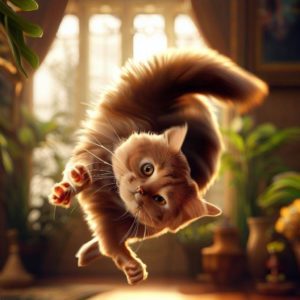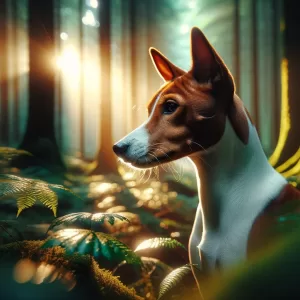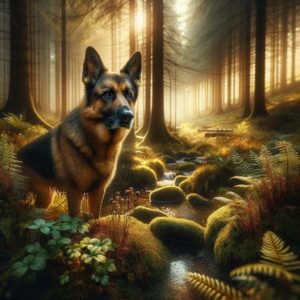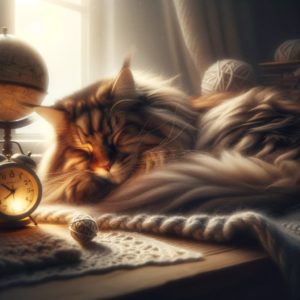As the sun surrenders its throne to the silver moon, the world plunges into twilight’s embrace. It’s in this enchanted time that a curious creature comes alive – the house cat. As charming as cats can be, their cryptic lives hide many a secret, one of which is their crepuscular nature. In essence, our feline companions are twilight hunters, most active during dawn and dusk. This intriguing behavioral trait is a fascinating relic from their wild ancestors, providing them a tactical edge in hunting and survival. In this exploration, we unravel this captivating aspect of cat behavior, tracing its evolutionary origins and understanding its contemporary implications.
Crepuscular Cats – At Home in the Twilight
It’s not a coincidence that your cat appears to spring to life just as you’re preparing your morning coffee or winding down for the night. It’s not merely some mischief born out of a capricious feline mind. Rather, this surge in activity during the transitional periods of dawn and dusk marks the essence of crepuscular behavior. Derived from the Latin term ‘crepusculum’, meaning ‘twilight’, crepuscular animals are most active during these soft light periods. This behavioral pattern is often misinterpreted as being nocturnal, but it differs significantly.
Hunting by Twilight – A Legacy from the Wild
The roots of this crepuscular lifestyle trace back to cats’ ancestral hunting instincts. Unlike their domesticated descendants, wild cats needed to be tactical in their hunting approaches. During twilight, when light is in flux, visibility can be challenging, and so, many prey species let down their guard. Capitalizing on this, cats developed an enhanced ability to see in dim light, making them the perfect twilight predators. This adaptation to the transitional light is still evident in modern domestic cats who often exhibit a ‘hunting spree’ during these hours.
Eyes that Embrace the Dusk
The crepuscular prowess of cats stems largely from their remarkable vision. Cats’ eyes are evolutionarily adapted to function optimally under low light conditions. Their eyes have a high number of rod cells, specialized for detecting movement and shapes in dim light. Additionally, cats possess a layer of tissue behind their retinas called the tapetum lucidum, which reflects light back through the retina, thereby enhancing their ability to see in low light. So, as the day’s light fades, your cat’s eyes are just warming up for their twilight prowl.
Body Clock and Behavioural Patterns
Cats aren’t merely guided by their incredible vision. Their internal body clock, or circadian rhythm, also plays a significant role in their crepuscular behavior. This biological timekeeper determines many of their behavioral and physiological patterns, including feeding and hunting. Just as humans have their most energetic phases during the day, cats have theirs during dawn and dusk. Even in a comfortable domestic setting, this ancestral internal clock keeps ticking, reminding them of their hunting duties.
Living with Twilight Hunters: What it Means for Pet Owners
Understanding your cat’s crepuscular nature can vastly improve your relationship with your feline friend. By acknowledging their peak activity periods, you can better tailor their feeding, play, and nap times. Recognizing their instinctual need to ‘hunt’ can help you incorporate stimulating activities during these periods. Providing them with interactive toys or puzzle feeders can effectively mimic the challenges of hunting, providing them the physical and mental stimulation they crave during these twilight hours.
The Mystique of Crepuscular Cats – An Enduring Legacy
Our domestic cats, in their many captivating quirks, carry with them an enduring legacy from their wild ancestors. Their crepuscular behavior, a fascinating evolutionary adaptation, reminds us of their innate connection to the primal world. As twilight wraps the world in its magical shroud, your cat steps into its prime, a perfect symphony of nature and evolution. By understanding these twilight prowlers, we can not only appreciate them more but also provide them a lifestyle in harmony with their inherent traits. As we peer into the twilight hours through the luminescent eyes of our feline companions, we stand reminded of their wild past and our shared journey towards the future.








